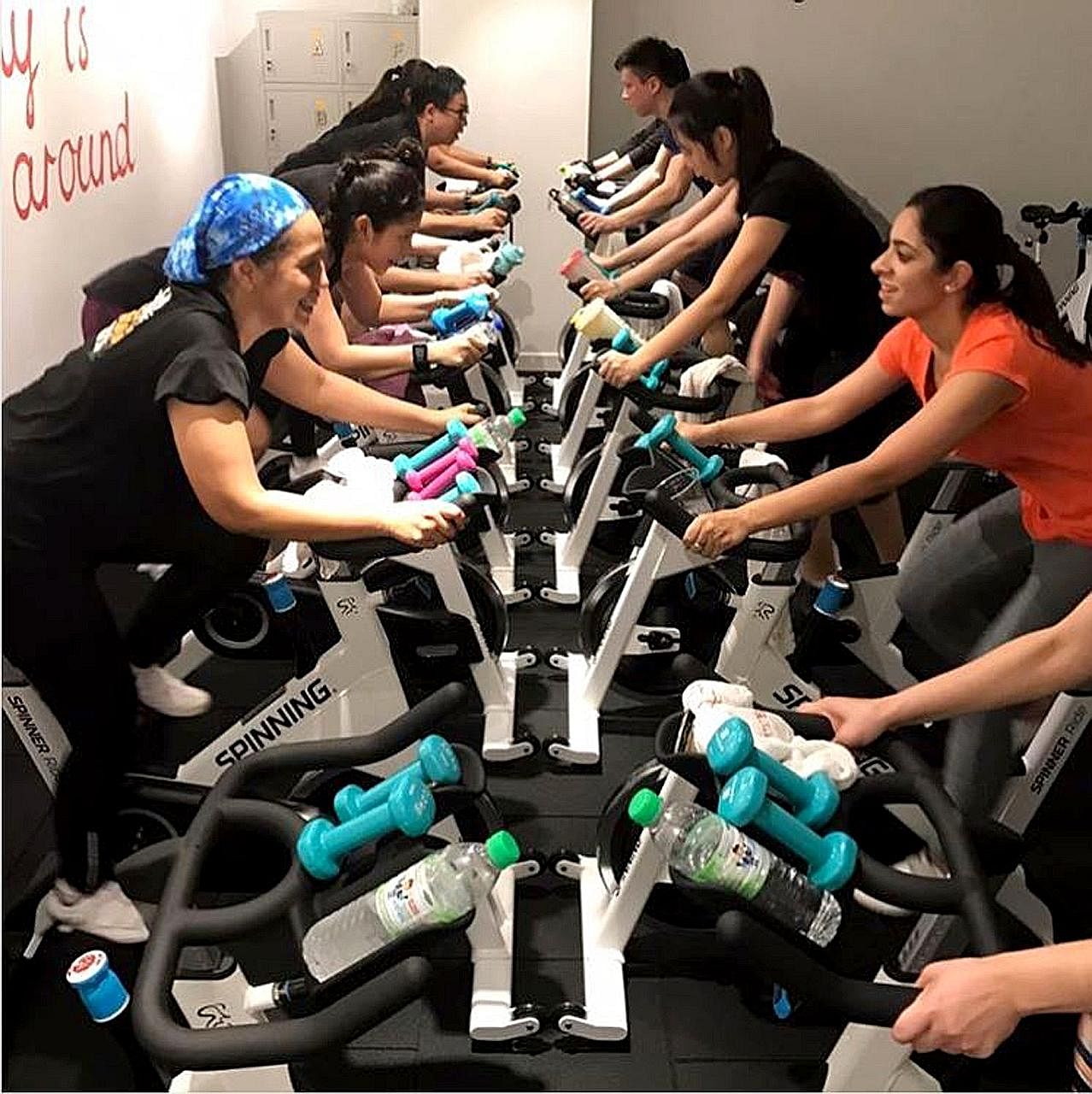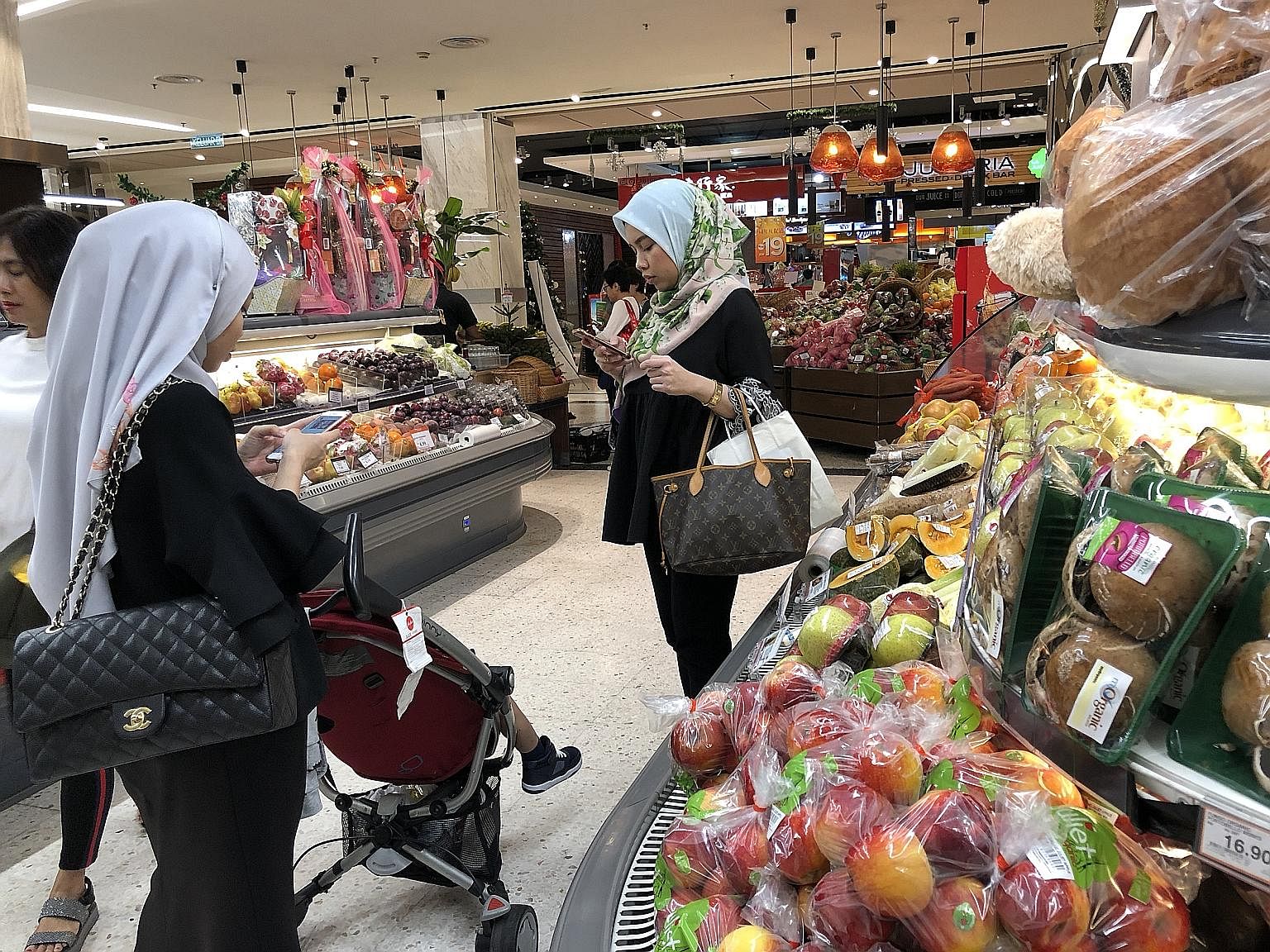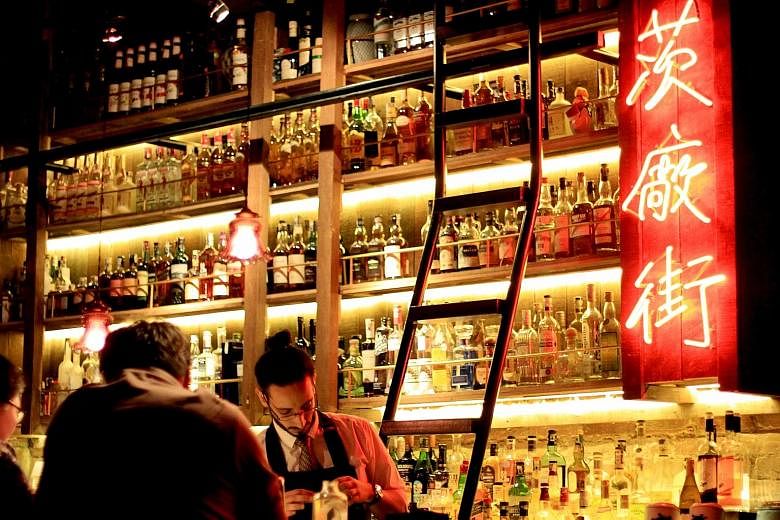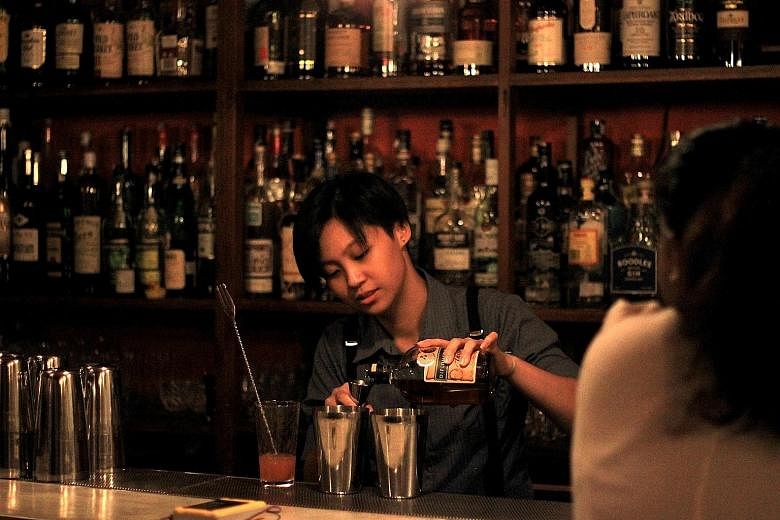The average Malaysian may be feeling the squeeze of stagnant salaries and rising living costs, but the fashionably dressed crowd at Suzie Wong, a hip bar in Kuala Lumpur's business district, seem unaffected as they sip RM45 cocktails in the company of cheongsam-clad hostesses seated in swings.
Speakeasies - intimate, tucked-away bars serving customised drinks created by mixologists - are mushrooming in Malaysia's capital as the country's upper-middle class seek to quench their thirst for "experiential luxury".
High-end living is where the money is, and businesses have leapt to cater to the lifestyle needs of the top 20 per cent of households with a monthly income of RM13,148 (S$4,300) and above.
These are the earners who buy organic, imported produce at smart grocers, and work out at cycle gyms and indoor ski centres.
"I don't mind paying a premium for groceries since I prefer variety, with both local and imported products," said housewife Ku Yunn Yee. "If I'm going to the grocer thinking to buy imported fruit, I'm not going to stop myself just because it has got more expensive," said Ms Ku. "I don't see this as a luxury since everyone around me shops in the same stores and they spend just as much on groceries, if not more".
The 31-year-old regularly shops at an upscale grocery store where RM7 avocados and RM58 slabs of cod bring her fresh food bill to at least RM500 a month. This does not seem exorbitant, until it is compared with what half of the country's workforce earns - less than RM1,703 (S$560) a month.
Wealth inequality is common in many developed societies. In the United States, the wealth gap is at its all-time high, with upper-income families now holding 75 times the wealth of low-income families. A decade ago, it was only 40 times the wealth of poorer families.

Malaysia, despite lowering its Gini coefficient - the most commonly used measurement for income inequality worldwide - last year, still has worrying wage gaps.
"The Gini coefficient in Malaysia continues to remain high, compared to its peers such as Indonesia and Thailand," said Dr Sudhir Shetty, World Bank chief economist for East Asia and the Pacific, earlier this month.
This is clearly illustrated in the capital's shopping scene, where hypermarkets catering to the bottom and middle-income groups struggle, while upmarket grocery stores for the well-heeled are thriving.
Jaya Grocer, which opened its first store in 2011 and now has 22 stores nationwide, is one such success story. It stocks premium-priced goods, with a focus on imported products.
Meanwhile, Tesco Malaysia is downsizing floor space at six of its hypermarkets while Giant closed five supermarkets last month.

The annual US Department of Agriculture report on food and beverage products found that imports from the United States into Malaysia have increased by 71 per cent in the last seven years, from US$5.465 billion in 2009 to US$9.346 billion (S$12.56 billion) last year. The rise is largely attributed to the demand from and growth of upscale grocery stores.
-
$4.3k
Monthly income of top 20 per cent of households in Malaysia is this sum and above.
$560
Monthly income of half of the country's workforce is less than this amount.
Another indicator is car sales. Carmaker Perodua, which supplies the lower-and middle-income groups, saw sales stagnate this year compared with 2016, whereas luxury make BMW saw a 20 per cent increase in sales for the period from January to October this year over the same period last year.
Spending habits have also shifted. A study by Boston Consulting Group this year found the rich now prefer experiential luxury over personal luxury goods. In Malaysia at least, that explains the demand for higher-quality groceries, ritzy cocktail bars and posh gyms.
Architect Vincent Seah, whose monthly expenses exceed RM10,000 - not including his loan repayments - sees himself as "well-to-do but not wealthy". "When I still have to think twice about what I want to buy, that means I'm not wealthy," the 32-year-old said.
-
INCOME AND INEQUALITY IN MALAYSIA
Monthly household income in 2016
Top 20 per cent: RM13,148 (S$4,300)
Middle 40 per cent: RM6,275
Bottom 40 per cent: RM3,000
Gini coefficient - measurement of economic inequality
2014: 0.401
2016: 0.399
The United Nations rates coefficients higher than 0.4 as dangerous levels of inequality. A coefficient of below 0.2 constitutes equalitarianism.
Total millionaires (net worth above US$1 million, or S$1.35 million, excluding primary residence)
2006: 27,200
2016: 43,000
2026: 73,100 (forecast)
Workers who qualify to pay taxes
2016: 2.27 million (15.5 per cent of total)
For 2017, taxable monthly income starts at RM2,851
SOURCES: MALAYSIA'S DEPARTMENT OF STATISTICS, KHAZANAH RESEARCH INSTITUTE, PARLIAMENTARY REPORT (HANSARD) AND KNIGHT FRANK WEALTH REPORT
But he is financially secure enough to take spin classes at a premier gym where monthly membership fees are easily four times the RM150 charged at standard fitness centres. "Normal gyms are boring. Spinning combines cycling with music and you can see your own avatar as you ride," Mr Seah said.
Entrepreneurs in Malaysia have become creative in marketing adventure theme parks, indoor ski centres and trampoline parks to high-income families, pitching them as educational or, ironically, money-saving lessons.
An indoor ski session with an instructor, for example, may come with a hefty price tag of RM159 per hour, but it means less time and money wasted learning on the slopes of Aspen.
"The cost of lessons on the mountain can be prohibitively high for many and of limited benefit, depending on the time you have available," said Mr Izhan Hassan, founder of indoor ski centre First Traxx. Vacationers do not "burn through precious and expensive holiday time trying to learn or improve their ability", he said.
The 2017 Knight Frank Wealth Report shows the number of Malaysia's rich has been growing. The number of millionaires - those having a net worth of more than US$1 million - nearly doubled in the last decade, between 2006 and 2016, to 43,000. These represent 0.13 per cent of Malaysia's population of 32 million. Half of these millionaires reside in Kuala Lumpur.
Meanwhile, Malaysians who earn roughly RM25,000 a month are in the country's top 1 per cent of wage earners, said Dr Muhammed Abdul Khalid, chief economist at consultants DM Analytics. That roughly translates into 146,000 individuals.
According to American sociologist Rachel Sherman, associate professor at the New School, most affluent people do not see themselves as rich, because they often compare themselves with the super-wealthy.
"They described themselves as 'normal' people who worked hard and spent prudently, distancing themselves from common stereotypes of the wealthy as ostentatious, selfish, snobby and entitled," Ms Sherman wrote in her book, Uneasy Street: The Anxieties Of Affluence.
Affirming the sociologist's observation, a Malaysian fund manager whose net worth is over US$1 million told The Straits Times that she is not considered wealthy because "I don't have a private jet or wear a Richard Mille", referring to the luxury watch brand. She declined to be named for this article.


